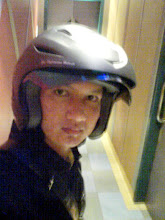What is Gamelan?
A 'gamelan' is a kind of musical ensemble of Indonesian origin typically featuring a variety of instruments such as metallophones, xylophones, drums, and gongs; bamboo flutes, bowed and plucked strings, and vocalists may also be included. The term refers more to the set of instruments than the players of those instruments. A gamelan as a set of instruments is a distinct entity, built and tuned to stay together — instruments from different gamelan are not interchangeable.
The word "gamelan" comes from the Javanese word "gamel", meaning to strike or hammer, and the suffix "an", which makes the root a collective noun.
History
The gamelan has an old and mysterious origin. Apparently it predates the Hindu-Buddhist culture that dominated
In Javanese mythology, the gamelan was created by Sang Hyang Guru in Saka era 167 (c. AD 230), the god who ruled as king of all Java from a palace on the Maendra mountains in Medangkamulan (now Mount Lawu). He needed a signal to summon the gods, and thus invented the gong. For more complex messages, he invented two other gongs, thus forming the original gamelan set.[3]
In the palaces of Java are the oldest known ensembles, the Munggang and Kodokngorek gamelans, apparently from the 12th century. These formed the basis of a "loud style." A different, "soft style" developed out of the kemanak tradition and is related to the traditions of singing Javanese poetry, in a manner which is often believed to be similar to performance of modern bedhaya dance. In the 17th century, these loud and soft styles mixed, and to a large extent the variety of modern gamelan styles of
TUNING
The tuning and construction of a gamelan orchestra is a complex process. Javanese gamelans use two tuning systems: ''sléndro'' and ''pélog''. There are other tuning systems such as ''degung'' (exclusive to Sunda, or
Colin McPhee remarked, "Deviations in what is considered the same scale are so large that one might with reason state that there are as many scales as there are gamelans."However, this is a view that is contested by some teachers of gamelan, and there have been efforts to combine multiple ensembles and tuning structures into one gamelan so as to ease transportation issues at the times of festivals. One such ensemble is gamelan Manikasanti, which can play the repertoire of many different ensembles.
Balinese gamelan instruments are commonly played in pairs which are tuned slightly apart to produce interference beats, ideally at a consistent speed for all pairs of notes in all registers. It is thought that this contributes to the very "busy" and "shimmering" sound of gamelan ensembles. In the religious ceremonies that contain gamelan, these interference beats are meant to give the listener a feeling of a god's presence or a stepping stone to a meditative state.
INFLUENCE WESTERN MUSIC
The gamelan has been appreciated by several western composers of classical music, most famously Claude Debussy who heard a Javanese gamelan play at the Paris Exposition of 1889 (World's Fair). (The gamelan Debussy heard was in the ''slendro'' scale and was played by Central Javanese musicians.) Despite his enthusiasm, direct citations of gamelan scales, melodies, rhythms, or ensemble textures have not been located in any of Debussy's own compositions. However, the equal-tempered whole tone scale appears in his music of this time and afterward, and a Javanese gamelan-like heterophonic texture is emulated on occasion, particularly in "Pagodes," from ''Estampes'' (solo piano, 1903), in which the great gong's cyclic punctuation is symbolized by a prominent perfect fifth.
Direct homages to gamelan music are to be found in works for western instruments by Béla Bartók, Francis Poulenc, Olivier Messiaen, Colin McPhee, Benjamin Britten, Pat Metheny, and Steve Reich. In more recent times, American composers such as Barbara Benary, Philip Glass, Lou Harrison, Dennis Murphy, Loren Nerell, Michael Tenzer, Evan Ziporyn, Daniel James Wolf and Jody Diamond as well as Australian composers such as Peter Sculthorpe, Andrew Schultz and Ross Edwards have written several works with parts for gamelan instruments or full gamelan ensembles. I Nyoman Windha is among contemporary Indonesian composers that have written compositions using western instruments along with Gamelan. American folk guitarist John Fahey included elements of gamelan in many of his late-60s sound collages, and again in his 1997 collaboration with Cul de Sac, ''The Epiphany of Glenn Jones.'' The experimental art-rock band King Crimson, while not using gamelan instruments, used interlocking rhythmic paired guitars that were influenced by gamelan. Experimental pop groups The Residents, His Name Is Alive, Xiu Xiu, Macha and the Sun City Girls have used gamelan percussion. The gamelan has also been used by British multi-instrumentalist Mike Oldfield at least three times, "Woodhenge" (1979), "The Wind Chimes (Part II)" (1987) and "Nightshade" (2005).
Recently, many Americans were first introduced to the sounds of gamelan by the popular anime film ''Akira''. Gamelan elements are used in this film to punctuate several exciting fight scenes, as well as to symbolize the emerging psychic powers of the tragic hero, Tetsuo. The gamelan in the film's score was performed by the members of the Japanese musical collective Geinoh Yamashirogumi. Gamelan and kecak are also used in the soundtrack to the video game Secret of Mana. The musical soundtrack for the Sci Fi Channel series Battlestar Galactica features extensive use of the gamelan, particularly in the 3rd season.
